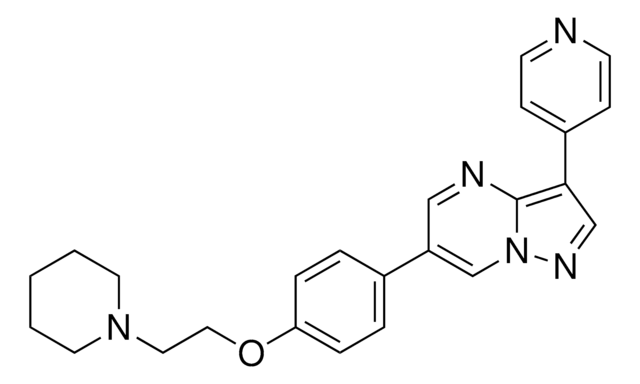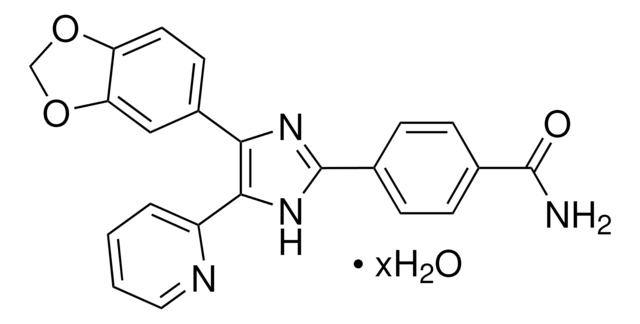M0696
Anti-MNK2 (N-terminal) antibody produced in rabbit

~1.0 mg/mL, affinity isolated antibody, buffered aqueous solution
Sinônimo(s):
Anti-GPRK7, Anti-MAP kinase interacting serine/threonine kinase 2, Anti-MKNK2
About This Item
Produtos recomendados
fonte biológica
rabbit
Nível de qualidade
conjugado
unconjugated
forma do anticorpo
affinity isolated antibody
tipo de produto de anticorpo
primary antibodies
clone
polyclonal
Formulário
buffered aqueous solution
peso molecular
antigen ~50 kDa
reatividade de espécies
rat (predicted), human, mouse (predicted)
validação aprimorada
recombinant expression
Learn more about Antibody Enhanced Validation
concentração
~1.0 mg/mL
técnica(s)
immunocytochemistry: 2-5 μg/mL using paraformadehyde fixed HEK-293T cells transfected with human MNK2
immunoprecipitation (IP): 2-4 μg using lysates of HEK-293T cells transfected with human MNK2
indirect immunofluorescence: suitable
western blot: 1-2 μg/mL using lysates of HEK-293T cells transfected with human MNK2
nº de adesão UniProt
Condições de expedição
dry ice
temperatura de armazenamento
−20°C
modificação pós-traducional do alvo
unmodified
Informações sobre genes
human ... MKNK2(2872)
mouse ... Mknk2(17347)
rat ... Mknk2(299618)
Descrição geral
Imunogênio
Aplicação
forma física
Exoneração de responsabilidade
Não está encontrando o produto certo?
Experimente o nosso Ferramenta de seleção de produtos.
Código de classe de armazenamento
10 - Combustible liquids
Ponto de fulgor (°F)
Not applicable
Ponto de fulgor (°C)
Not applicable
Equipamento de proteção individual
Eyeshields, Gloves, multi-purpose combination respirator cartridge (US)
Escolha uma das versões mais recentes:
Certificados de análise (COA)
Lamentamos, não temos COA para este produto disponíveis online no momento.
Se precisar de ajuda, entre em contato Atendimento ao cliente
Já possui este produto?
Encontre a documentação dos produtos que você adquiriu recentemente na biblioteca de documentos.
Nossa equipe de cientistas tem experiência em todas as áreas de pesquisa, incluindo Life Sciences, ciência de materiais, síntese química, cromatografia, química analítica e muitas outras.
Entre em contato com a assistência técnica







